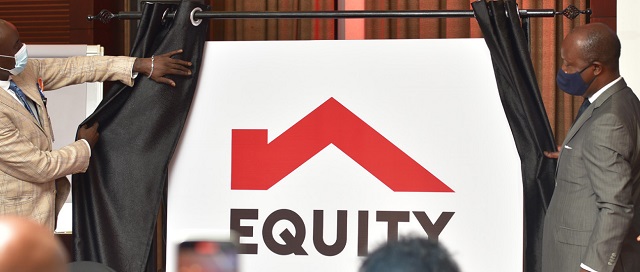The real impact of COVID-19 pandemic on banks will be seen in the second or third quarter of next year Kampala, Uganda | ISAAC KHISA | Ugandan commercial banks may believe that they are headed for recovery amid the novel coronavirus pandemic but the headwinds are still big, said Tumubweine Twinemanzi, Director Supervision at the Bank of Uganda.
The banking industry executives had appeared optimistic of a rebound in the banking activities owed to a sharp drop in the non-performing loans from 5.8% at the end of June to 5.1% at the end of September this year. This is far lower than that the 5.4% recorded at the end of March, 2020.
But Twinemanzi, who spoke during Equity Bank’s rebranding ceremony at Kampala Serena Hotel on Dec. 17, said there’s now a worrying trend of businesses requesting for second restructuring of loans.
“…We notice that there’s a slight uptake of about 16% of all the loans that have been restructured going to the second restructuring exercise within this pandemic period,” he said. “This implies that some of the business that were initially given some credit relief, the distressed they faced then, still remains.
“What will happen then when we decide to unwind these credit relief? Possibly we shall know these in the next 100 days,” he added. The BoU in April this year granted permission to all banking institutions to provide a 12-months credit relief through the restructuring of loans of both corporate and individual customers who were or would be affected by the COVID-19 pandemic.
The objective was to ensure financial stability and alleviate the impact of the COVID-19 pandemic on the financial sector
and economic growth.
So far, the banking institutions have restructured loans with clients worth Shs 6.7 trillion, according to the BoU.
This means that the restructured loans are yet to be included in the NPL category as it is anticipated that they will soon be repaid as the pandemic-induced situation eases.
Twinemanzi, however, noted that bank deposits grew 20% year-on-year as at the end of September this year, signaling that it is the borrowers who are still having significant stress that has persisted longer than anyone expected.
“Maybe we’re just seeing the first part of the bigger effect of the pandemic on banks,” he said, adding that the real impact of COVID-19 on banks will be seen in the second or third quarter of next year.
Twinemanzi said though the banking industry has exhibited […]
